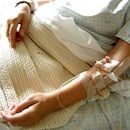
Childhood Diseases: An Unwelcome Comeback
When is the last time that you, as a healthcare worker, saw a child with rickets or gout? Weren’t these diseases supposed to be eradicated as a result of improved diet and better access to healthy food choices? Unfortunately, they are on the rise, worldwide.
In England, due to the rise in poverty and poor quality food sources for Vitamin D and calcium, rickets is being seen more frequently. Gout is on the rise because obesity has become a persistent problem (NA, 2015). Rickets and gout are on the rise in the U.S. too, but not to the same extent.
For many of us, polio had been considered another disease of the past; that is, until recently. Over 80% of countries have eradicated polio. However, did you know that when just one person has polio, they put the entire region at risk for an outbreak? What about scarlet fever? Didn’t we eradicate its untoward effects with antibiotics?
Up until a few years ago, it would have been difficult to find a single case of whooping cough or pertussis in the hospital. Suddenly it seems that healthcare facilities are swabbing every patient in the unit who has a cough and runny nose. Now we are once again drawing titers to see who still had antibodies and offering vaccines to everyone who is not immune.
Measles, mumps, and chicken pox outbreaks are being seen throughout the nation. Measles remains one of the leading causes of death among children. Every hour, around the world, 14 children die of the disease; especially the chronically ill and malnourished. Just last year (2014) there was a record spike of 640 measles cases in the United States (NA, 2015 & CDC, 2013).
Over time, modern society’s diets have evolved from whole, healthy foods to foods that have largely been stripped of the nutrients essential to good health. Calorie/fat-laden fast food and/or “enriched” factory-produced food products have become the norm. Fresh produce is too cost-prohibitive – and many times not available – for those living in underserved neighborhoods. As a result, the nation’s poor are largely missing out on the benefits of eating nutritiously.
With all that in mind, what are healthcare providers to do? Spread the word. Educate your patients and the parents of your patients. While vaccinations have been shown to decrease the spread of disease, there will always be those who cannot or do not want to be vaccinated. However, if we can influence the majority of the population to get vaccinated, we can help prevent the spread of disease. Give your patients and their families information about proper nutrition, and provide resources when available. And don’t forget to follow up if possible.
As healthcare workers, we can influence our patients in a positive way. Our knowledge of medical science, nutrition, and hygiene are important tools that can educate patients and their families in the quest to help eradicate the disease.
Biography:
Dr. Miller-Hoover is a certified Acute and Critical Care Pediatric Clinical Nurse Specialist and has worked in nursing for more than 30 years. Her nursing career has taken her from the bedside to education and leadership in critical care units where she has cared for patients of all ages. Dr. Miller-Hoover is a published author in peer-reviewed nursing journals and has been accepted for various poster and podium presentations at national conferences.
References:
No Author. (2015). Diseases that are making a comeback. CDC. Measles — United States, January 1-August 24, 2013. MMWR 2013; 62(36);741-43




